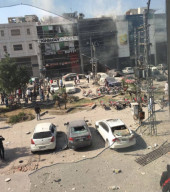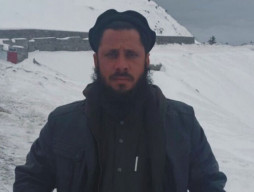
There is little doubt that these attacks originated from, and were controlled by, handlers from across our borders and are being executed to serve the interests of our arch-enemy.
But, quite obviously, even these people find some local supporters and facilitators. These facilitators have their own agenda and distorted beliefs and are either unaware, or indifferent to, the fact that they are actually serving the ends of an enemy.
IS has laid claim to the attack on the shrine.
It is almost impossible to refute such a claim but, in the case of IS, it’s definitely a dubious one. IS has a limited presence in Pakistan. Moreover, it is unlikely to gather too much support in a country like Pakistan, where the bulk of the extremists belong to the Deobandi sub-sect rather than Wahabiists or Salafists.
Whereas it is important to identify the perpetrators and punish them, but it is far more important to understand why such attacks continue to occur and how we should react to them.
Since we have already progressed (or regressed) far beyond the question of why these terrorists came into being, the question now is whether these occur due to intelligence failures or because of insufficient (or inefficient) security measures?
The first point I wish to make in this context is that, whatever security measures our LEAs undertake, are essentially “defensive” in nature. If we identified every single vulnerable place around the country; they would number in hundreds of thousands: a number impossible to defend even if every single uniformed person was deployed.
And, if we found the numbers to defend these locations, even then terrorists would be able to find other market places or congregations to kill our hapless innocent citizens.
Second, all defensive protective measures must, of necessity, cause inconvenience to the public. Therefore, all LEAs are hesitant to escalate defensive security and, when they do, they end it earliest possible. Thus enabling terrorists to bide their time.
We, all citizens of this benighted country, must appreciate and assist our LEAs, whether the police, Rangers, or army, for risking their lives in our protection. We must learn patience at check posts and wherever else heightened security results in inconveniencing us.
Third, this war on terrorism has, therefore, become an “intelligence war” i.e. a war almost entirely dependent on intelligence.
I have never served in an intelligence organisation but, I am familiar with their working. I have in earlier articles attempted to explain just how difficult it is to penetrate terrorist organisations and how long it takes. The example of how long it took the British to penetrate the IRA frequently comes to mind.
Bearing that in mind, our intelligence agencies are doing a remarkable job. But, there will always be failures.
The intelligence business is, not merely dangerous in many and complicated ways, it is also an entirely thankless one. Its successes are often kept from the public because, if all successes are made public, terrorists are more likely to learn how and why successes succeeded and thus, prevent further successes.
However, every single failure is public.
Incidentally, the possibility of the Sehwan attack was also known, though not the exact location and a memo was issued to selected audience(s).
In this context, somebody who saw that memo, wondered why it was not made public. I responded by saying that no government would but, let me attempt to answer that question here too.
Suppose the information that a shrine in Sindh was likely to be attacked by terrorists was made public, what would be the result?
In all likelihood, the faithful followers would cease to visit the shrine(s). Were that to happen, terrorists would in all likelihood call off the attack. What would that result in?
It could be argued that an attack that could have killed dozens was prevented from occurring; which is good. But, that isn’t all that would happen. Since the attack didn’t occur, there would be a large number wondering if the government had actually merely panicked.
And if such an incident recurred, the public would lose confidence in such warnings and ignore them. And if, ignoring (or not) a future warning, an attack, another attack occurred, the government and its intelligence agencies would be hauled over coals.
That is why even warnings rated highly probable are never made public.
Finally, how should the public react to the continuation of such attacks?
Examine each incident on merit and, while retaining the right to criticise, examine each incident with understanding and sympathy for LEAs and intelligence agencies in the light of the foregoing discussion.
And second, remember that terrorists are trying to influence the government to change its policies under public pressure. And, if you respond in panic, you are helping terrorists by putting pressure on the government.
I am not a believer in shrines or Peers but the followers of Hazrat Lal Shahbaz Qalandar have done us proud. Just like the attack at Wagah in November 2014 resulted in a larger assembly the day after the attack, the gathering at the shrine three days after the attack was larger than before.
That is how we must respond to terrorists; by challenging them.
Published in The Express Tribune, February 24th, 2017.
Like Opinion & Editorial on Facebook, follow @ETOpEd on Twitter to receive all updates on all our daily pieces.











































COMMENTS (6)
Comments are moderated and generally will be posted if they are on-topic and not abusive.
For more information, please see our Comments FAQ